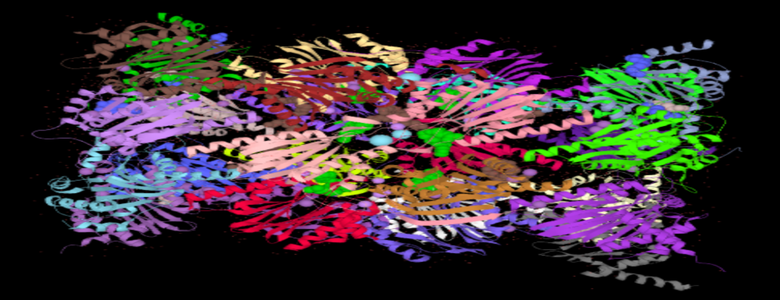
MOLECULES OF LIFE & MUTATIONS
A practical computer course: molecular modelling and disease explanation
Motto: Never learn a word in isolation.
This year we are going to meet in Prague on April, 20th - 23rd, 2020.
This course will help you to understand a disease in correlation with molecules, their mutations and specific drugs while performing database searches and molecular modelling on your own. Here, we use only public domain resources you might be able to exploit in your everyday practice.
Prof. Siegfried Schwarz (Medical University Innsbruck, Austria), Assoc. Prof. Jiří Hatina (Faculty of Medicine in Pilsen, Charles University in Prague, Czech Republic) and Dr. Karel Drbal (Faculty of Science, Charles University in Prague, Czech Republic) would like to welcome undergraduate students of Medicine as well as Biology, from the 3rd semester onwards. You are going to learn molecular modelling methods, perform your individual homework and give a final 10-minutes presentation in English within this 3-day interactive and interdisciplinary course.
This course gives you a general overview on our understanding of the normal as well as abnormal protein structures originating from particular gene mutations and/or allosteric effector function in health as well as in a diseased state. Introduction provides couple of examples of structure-function relationships in human medicine.
Next day we follow with a hands-on course in a computer room where attendees receive a detailed step-by-step description how to perform practical molecular modelling on PC using appropriate open-source software (PyMol).
Having the X/Y/Z coordinates of atoms, as deposited in the Brookhaven Protein Data Bank (PDB), students can visualize and manipulate 3D structures of crystallized proteins, alone or after interaction with small or large ligands such as their substrates, drugs, DNA or other proteins. Attendees will learn also how to use the OMIM (Online Inheritance in Men) Data Bank from where they can retrieve the published mutations and a corresponding disease pathology. Thereby, various structural characteristics can be recognized: domains of certain structure or charge, hydrophobicity or shape and other properties, which can serve e.g. as a ligand-binding domain, a DNA-binding domain, a drug-metabolizing pocket or as a domain for any other biological function. The real power of molecular modelling resides in its informative value displaying the molecular structure, in total or in portions thereof, in different formats such as wireframe, protein backbone, atoms, overall surface etc. It is possible to turn the molecule in all directions and to see in real time various aspects of its structure. Most importantly, points of mutation, as documented in the OMIM and other databases, can be mapped into a structural model in order to understand which function of the protein would thus be altered and whether this change in structure would result in loss-of-function or gain-of-function showing recessive or dominant effect. Link between arginine vasopressin precursor (AVP) and Diabetes insipidus serves as an illustrative and informative example.
In the second part of this course, students will get assigned an individual mutated protein and a corresponding disease pathology that they have to elaborate as a homework according to the demo example they have seen in the course. Each student should prepare a short (10 minutes) lecture in Power Point or alternative and discuss her/his observations, published data and clinical outcomes.
On the last day of the course (after at least 2 weeks), students are going to present their homework in front of all attending colleagues including teachers. As such, everybody learns from the others - kind of a multiplication effect.
The course is based on a textbook published by Siegfried Schwarz: MOLECULES OF LIFE & MUTATIONS (Karger, Basel 2002, ISBN: 978-3-8055-7395-5), in which structures of 150 most important molecules are displayed.
http://www.karger.com/Book/Home/227359
- Teacher: Karel Drbal
- Teacher: Marian Novotný
- Teacher: Karel Drbal
- Teacher: Zdeněk Zadražil

Určeno pro studenty (3.), 4. a 5. ročníku a pro postgraduální (Ph.D.) studenty včetně lékařských oborů.
Jedná se o pokročilý 2-semestrální přednáškový kurs, který je zaměřen na podstatné prohloubení znalostí o molekulárních mechanismech vybraných imunitních dějů, jejichž základy byly probrány v základní přednášce Imunologie, kterou musí studenti povinně absolvovat v předchozím ročníku včetně zkoušky (Imunologie - MB150P14B). Výjimky jsou možné po ověření znalostí,
Nebudeme zde opakovat celou základní imunologii, ale detailně provazovat funkce vybraných molekul imunitního systému s buňkami a onemocněními v zimním semetru po jednotlivých stavebních kamenech a v letním semestru potom v systémovém pojetí.
- Teacher: Karel Drbal
- Teacher: Helena Ferklová
- Teacher: Zdeněk Zadražil